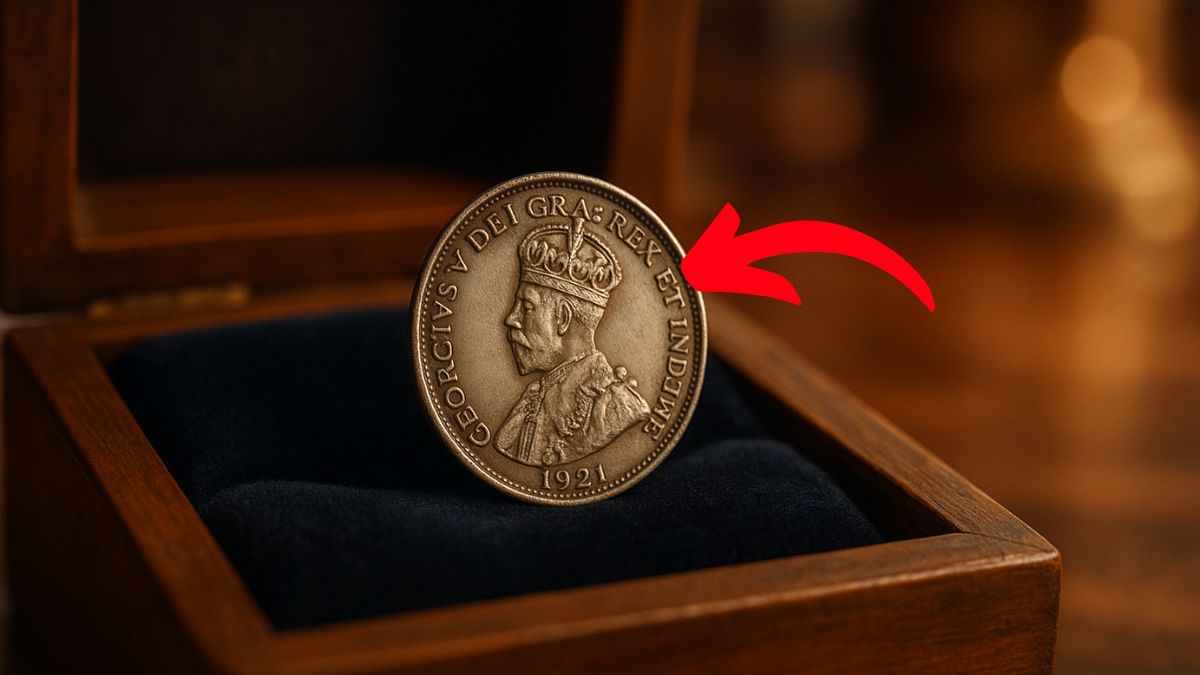The 1921 Canadian 5-cent coin, often hailed as the “Prince of Canadian Coins,” stands as one of the most coveted treasures among numismatists. Its rarity and historical significance have propelled its value to astonishing heights, with some specimens fetching up to $400,000 at auctions.
This article delves into the fascinating history, unique characteristics, and current market value of this exceptional coin.
Historical Context: The Transition from Silver to Nickel
In the early 20th century, Canada decided to transition its 5-cent coins from silver to nickel to reduce production costs and improve durability. In 1921, the Royal Canadian Mint produced approximately 2,582,495 silver 5-cent coins.
However, anticipating the switch to nickel coins in 1922, the Mint melted down the majority of the 1921 silver coins, leaving only a small number in circulation. Estimates suggest that fewer than 400 of these coins survived, making them exceedingly rare.
Design and Specifications
The 1921 Canadian 5-cent coin features:
- Obverse: Portrait of King George V, designed by E.B. MacKennal.
- Reverse: A wreath of maple leaves surrounding the denomination and date, designed by Leonard C. Wyon.
- Composition: 80% silver and 20% copper.
- Weight: 1.167 grams.
- Diameter: 15.494 mm.
These specifications align with the standard for Canadian 5-cent silver coins minted between 1920 and 1921.
Market Value and Auction Records
The value of a 1921 Canadian 5-cent coin varies significantly based on its condition and provenance. Below is a table summarizing recent auction results:
| Grade | Auction Date | Realized Price (CAD) | Auction House |
|---|---|---|---|
| AU-50 | April 14, 2023 | $12,980 | Colonial Acres Coins |
| MS-62 | March 24, 2023 | $25,393.75 | TCNC |
| VF-25 | January 18, 2024 | $8,910 | Heritage Auction |
| VF-25 | November 11, 2023 | $8,365 | TCNC |
| VF-20 | May 4, 2023 | $7,200 | Geoffrey Bell Auctions |
These figures illustrate the coin’s substantial value, even in lower grades.
Why Is It So Valuable?
Several factors contribute to the 1921 Canadian 5-cent coin’s high value:
- Rarity: With fewer than 400 known specimens, its scarcity is a primary driver of value.
- Historical Significance: As the last silver 5-cent coin before the switch to nickel, it represents a pivotal moment in Canadian numismatic history.
- Collector Demand: Its status as a key date coin makes it essential for completing a collection of Canadian 5-cent pieces.
- Condition Sensitivity: High-grade examples are exceedingly rare, commanding premium prices at auctions.
Tips for Collectors
If you’re fortunate enough to come across a 1921 Canadian 5-cent coin, consider the following:
- Authentication: Due to its high value, ensure the coin is authenticated by a reputable grading service.
- Condition Assessment: The coin’s grade significantly impacts its value. Professional grading can provide an accurate assessment.
- Storage: Store the coin in a protective holder to prevent damage.
- Market Research: Stay informed about current market trends and recent auction results to make informed decisions.
The 1921 Canadian 5-cent coin is more than just a piece of currency; it’s a tangible link to Canada’s numismatic past. Its rarity, historical significance, and the allure of potentially high returns make it a prized possession for collectors worldwide.
Whether you’re a seasoned numismatist or a curious enthusiast, the story of this coin serves as a compelling chapter in the rich tapestry of coin collecting.
FAQs
How many 1921 Canadian 5-cent coins are known to exist?
It’s estimated that fewer than 400 specimens have survived, making it one of Canada’s rarest coins.
What is the highest price ever paid for a 1921 Canadian 5-cent coin?
While prices vary based on condition, some high-grade examples have fetched up to $25,000 at auction.
Why were most 1921 Canadian 5-cent coins melted down?
In anticipation of transitioning to nickel 5-cent coins in 1922, the Royal Canadian Mint melted down the majority of the 1921 silver coins to repurpose the metal.

